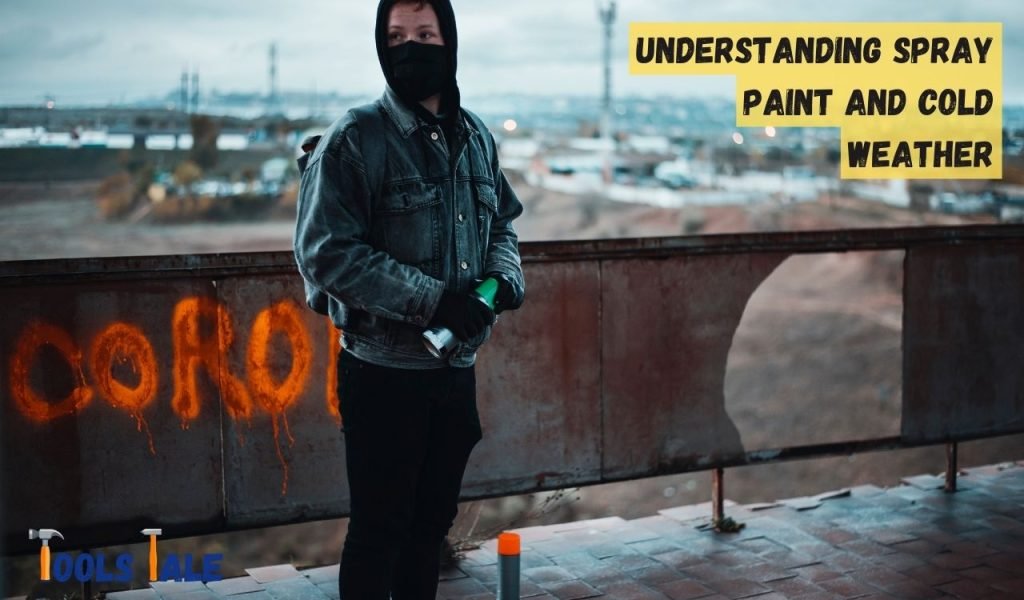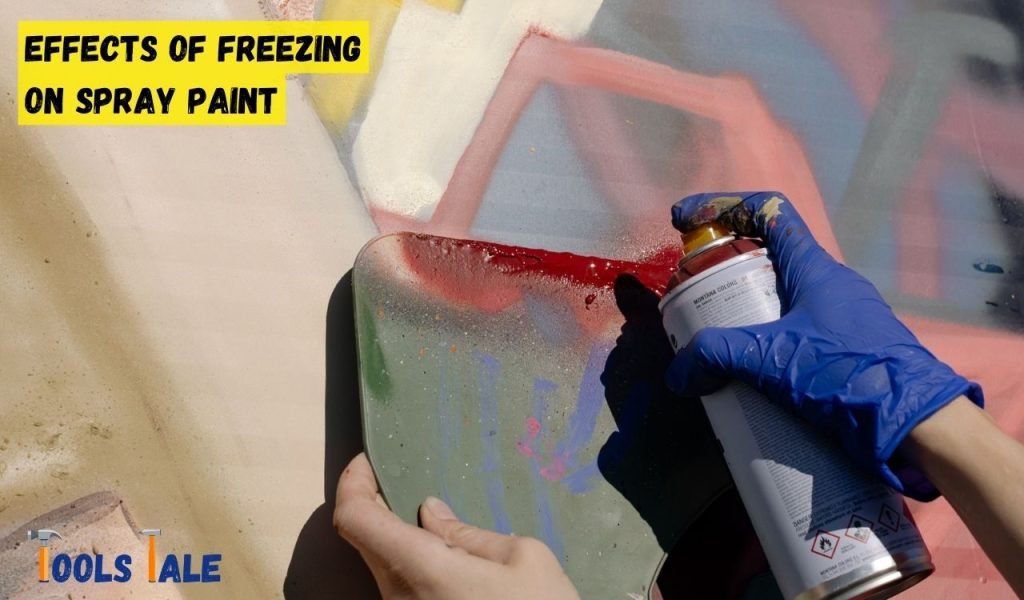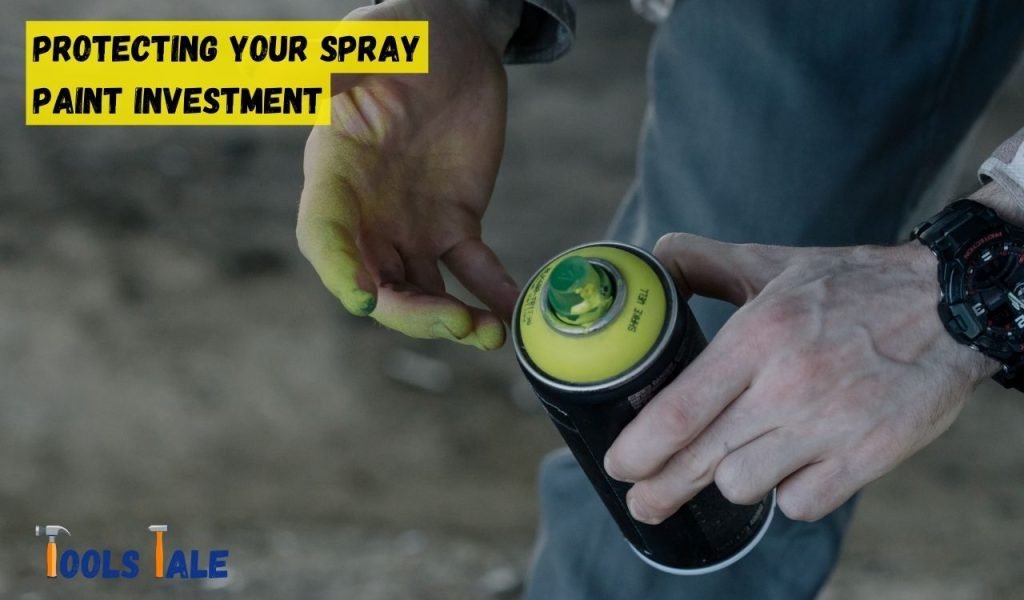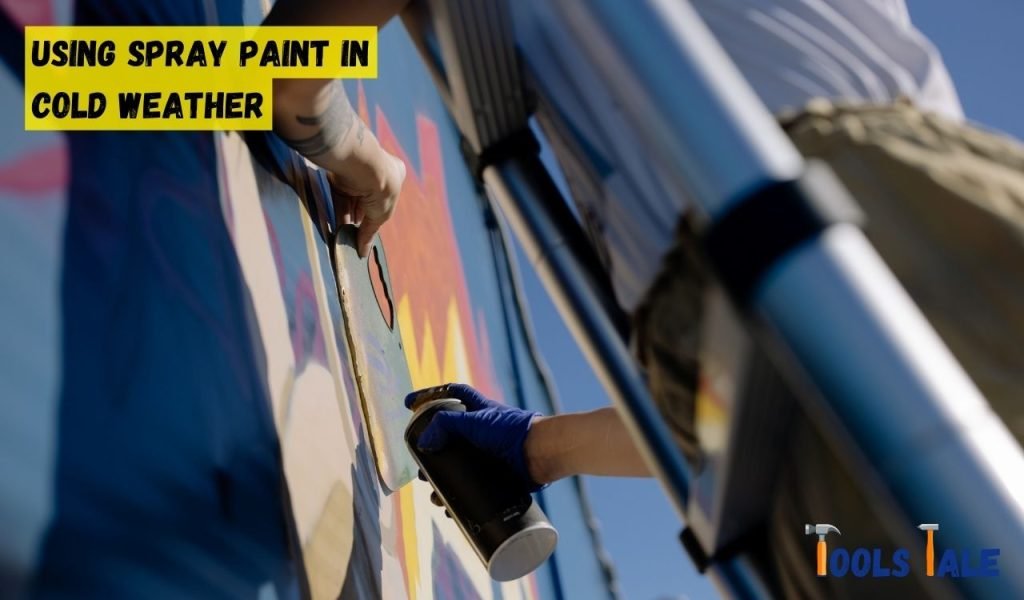Physical Address
304 North Cardinal St.
Dorchester Center, MA 02124
Physical Address
304 North Cardinal St.
Dorchester Center, MA 02124

Does spray paint freeze? Well, if you’ve ever found yourself pondering this question during a winter project or while digging through your garage for that forgotten can of paint, you’re in the right place. We’re about to unravel the mysteries of spray paint and its icy encounters. In the next few moments, you’ll discover what happens when cold weather meets that colorful aerosol can.
Get ready for a journey into the world of freeze and spray, where DIY meets Mother Nature’s chill. Let’s dive in and demystify the frosty relationship between spray paint and freezing temperatures.
Key Summary: Does spray paint freeze?
Spray paint can freeze, causing potential issues. Aerosol cans are sensitive to temperature extremes. When exposed to freezing temperatures (typically below 32°F or 0°C), the paint inside can thicken, become less effective, or even burst the can. To prevent this, store spray paint in a cool, dry place above freezing temperatures.
Yes, spray paint can freeze when exposed to extremely cold temperatures. Spray paint is a mixture of various components, including pigments, solvents, and propellants. These components can be affected by cold weather, leading to several challenges when using spray paint in freezing conditions.
As the mercury drops, the solvents within spray paint formulations may undergo changes in viscosity and overall behavior, potentially impacting the freezing point of the mixture. The pigments, responsible for the vibrant colors in spray paint, can also be affected, leading to issues such as clumping and uneven application.
The propellants in spray paint, which aid in the even distribution of the paint particles, may experience changes in pressure and efficiency when exposed to extreme cold. This can result in inconsistent spray patterns and difficulty in achieving the desired coverage.
Understanding the nuanced interactions between these components provides insight into why spray paint freezing is more than just a theoretical concern. It raises practical questions about the quality and performance of the paint in freezing conditions, prompting the need for precautionary measures and proper storage practices.
In the following sections, we’ll explore the specific temperature range at which spray paint may freeze, the potential effects of freezing on its quality, and practical tips to prevent and address these challenges. So, whether you’re a seasoned DIY enthusiast or a professional painter, arming yourself with knowledge about spray paint and freezing conditions is essential for successful projects, even in the coldest of climates.

Let’s dive into the intriguing world of spray paint and its interaction with cold weather. The burning question on your mind: “Does spray paint freeze?” We’ll break down the science, explore the challenges, and provide practical tips to conquer those frosty painting projects.
To understand how spray paint behaves in cold weather, we must first grasp its composition. Imagine spray paint as a symphony of pigments, solvents, and propellants, each playing a vital role:
Now, as the temperature drops, these components start to dance to a different tune.
Cold weather alters the behavior of spray paint, primarily because of the solvents. When it’s chilly, these solvents tend to evaporate more slowly, thickening the paint. The result? A thicker, less viscous mixture that can lead to some painting predicaments.
Understanding the temperature sweet spot for spray painting is paramount to achieving a flawless finish. While spray paint can brave various conditions, including cold ones, there’s a temperature range that promises the best results.

When the thermometer drops and freezing temperatures set in, spray paint faces a series of challenges that can affect its performance and the outcome of your projects.
One of the most frustrating issues you might encounter in cold weather is nozzle clogs and sputters. The solvents in spray paint become less cooperative as the mercury dips. This can lead to uneven paint application, sputtering bursts of paint, or even a complete nozzle blockage. The result? A disrupted painting process and a less-than-desirable finish.
Achieving even coverage with spray paint in cold weather can be a daunting task. As the solvents evaporate more slowly, the paint’s consistency changes. Some areas may receive too much paint, while others remain undercoated. This can result in a patchy finish that doesn’t do justice to your project.
Cold weather significantly extends the drying time of spray paint. Paint that usually dries quickly now takes much longer to set. This means you’ll need to exercise patience between coats, or you risk smudging and ruining your hard work.
The altered consistency of paint in cold weather can also affect the final appearance of your project. Instead of the vibrant, glossy finish you might expect, the cold can lead to a duller, less attractive outcome.
Cold temperatures can impact how well the paint adheres to surfaces. If the paint doesn’t bond properly, you may encounter issues like peeling or flaking, which can ruin the longevity and aesthetics of your project.

Given the potential challenges of using spray paint in freezing conditions, it’s essential to protect your investment and ensure that your paint remains in optimal condition.
To combat some of the adverse effects of cold weather, it’s a good practice to store your spray paint indoors at room temperature before use. This helps maintain the paint’s proper consistency and ensures smoother application.
Another effective way to bring your paint to the right temperature is by submerging the paint cans in a bucket of warm water for a few minutes. This can help counteract the thickening of the paint due to cold weather.
Selecting a sheltered location with minimal wind is essential when painting in cold weather. Wind can exacerbate the challenges of using spray paint in chilly conditions, such as nozzle clogs and uneven application. A sheltered spot can provide a more controlled environment for your painting projects.

While cold weather presents its share of challenges, it’s still possible to use spray paint effectively when the temperatures drop.
Maintaining an appropriate surface temperature is crucial for successful adhesion and drying. If possible, ensure that the surface you’re painting is also within the recommended temperature range for spray painting.
In cold weather, it’s advisable to apply thin coats of spray paint and exercise patience between coats. Thin coats allow for better solvent evaporation and can lead to smoother and more even coverage. Patience is key to achieving the desired results without compromising the finish.
In conclusion, the question Does Spray Paint Freeze? has been answered comprehensively. Cold weather can indeed affect spray paint, leading to challenges like clogs, extended drying times, and finish alterations. However, by storing paint properly, pre-warming it, applying thin coats, and choosing suitable locations, you can conquer these challenges.
So, whether you’re a DIY enthusiast or a professional, don’t let the freeze stop your creativity. With the right knowledge and techniques, you can spray paint effectively in any weather, ensuring your projects turn out beautifully.
No, paint isn’t necessarily ruined if it freezes. However, freezing can change its consistency, leading to issues like separation and clumping. Properly thawing and stirring the paint can often restore its usability.
Cold temperatures can cause spray paint to thicken, leading to issues like nozzle clogs and uneven application. It can also extend drying times and affect the final finish.
Most paints, including water-based ones, can start to freeze at temperatures below 32°F (0°C). Oil-based paints typically have a lower freezing point, around 20°F (-6°C) or even lower.
Spray paint is best stored between 50°F to 90°F (10°C to 32°C). Storing it within this temperature range helps maintain its proper consistency and usability.
Yes, paint can freeze overnight if left in extremely cold conditions. It’s essential to store paint in a temperature-controlled environment to prevent freezing.
Yes, acrylic paint can freeze. Freezing temperatures can cause acrylic paint to coagulate, affecting its texture and usability. Thawing and thorough mixing may restore it.
Temperature significantly affects spray paint. Cold weather can lead to issues like nozzle clogs, extended drying times, and a dull finish. Proper temperature management is crucial for spray paint projects.
Ideally, you should store paint in temperatures above freezing, around 50°F (10°C) or higher. Storing paint in temperatures below freezing can compromise its quality.
Temperatures below freezing, particularly for extended periods, are bad for paint. It can lead to freezing, changes in consistency, and potential damage to the paint’s properties.